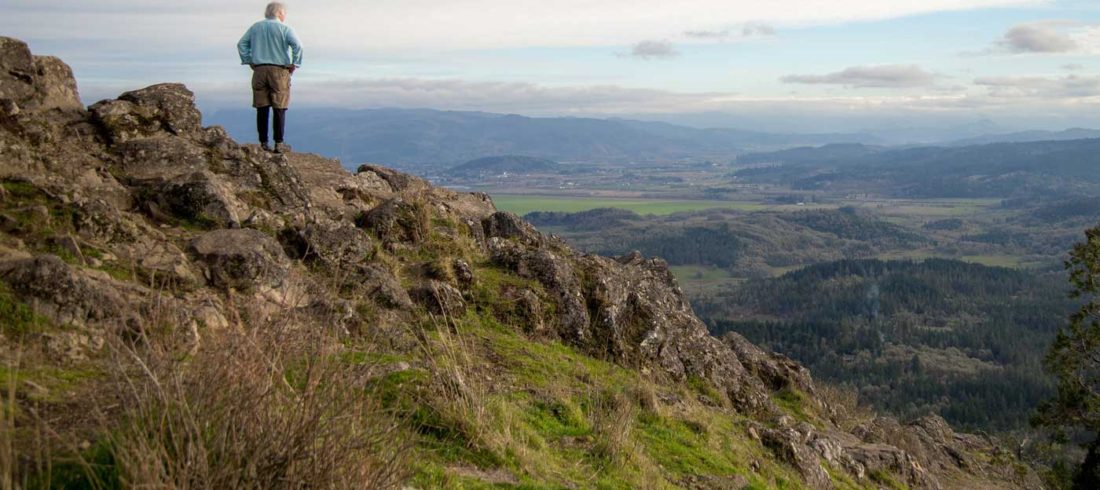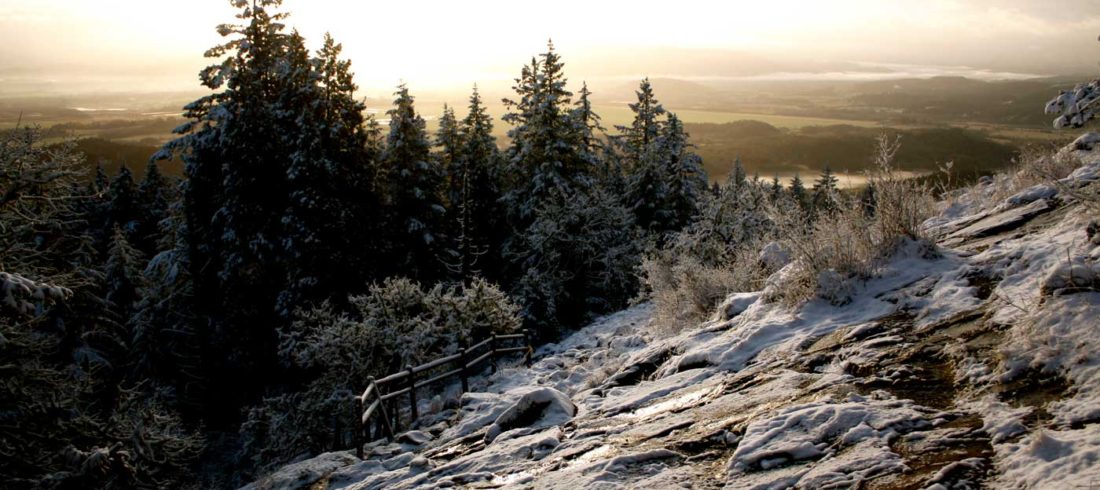Eugene’s city skyline is incomplete without the surrounding hills and mountains. To the east, the peaks of the Cascades glisten. To the west, the Coast Range’s blue-green ridges roll off into the distance. To the south, Spencer Butte, Eugene’s closest and most accessible summit, towers over the southern Willamette Valley at 2,058 feet.
The butte serves as an icon for Eugene, drawn boldly into the city’s logo, printed on postcards, and marked on both visitors’ and residents’ hiking itineraries. It is also a sanctuary for native life.
“Spencer Butte contains some of the most unique and valuable habitat in our region,” says Shelly Miller, ecological services team supervisor for the City of Eugene’s Parks and Open Space Division. “Because the area within the park has never been logged or significantly disturbed by road building, the forested vegetation communities that we see today are, to a large degree, native.”
Old-growth Douglas fir and ponderosa pine forests, oak savannah, and upland prairie all thrive below the rare ecology of the butte’s rocky summit. Near the summit, native grasses, wildflowers, ferns, and lichen typically found only at much higher elevations cling to the rocky outcrops. Throughout the park, wildlife abounds. Researchers have documented more than 100 resident and migratory species of birds. The North American Butterfly Association typically counts 50 species of butterflies on the butte’s main trail every July, and lizards, salamanders, and ground squirrels inhabit the summit. The park’s most elusive resident, however, earned Spencer Butte its original name by the Kalapuya Native Americans: Champ-a te, meaning “Rattlesnake Mountain.” While modern hikers are not likely to cross paths with these secretive serpents, western rattlesnakes are still keeping rodent populations in check, balancing the summit’s ecosystem.

Champ-a te received its English name in the early 1800s, when an adventurous member of the Hudson Bay Company left his party to ascend the butte alone, only to be killed, scalped, and robbed by Native Americans. His name was Spencer.
The tragedy didn’t discourage settlers, however. By the mid-1800s, homesteaders owned land around Spencer Butte; a wagon road, to be dubbed Willamette Street, flanked it; and Charles Church, a prominent businessman, owned the butte itself. Fortunately, the Eugene community realized early on the recreational and environmental worth of their skyline’s centerpiece. In early 1937, 90-year-old FM Wilkins, former Eugene mayor and businessman, headed a committee to purchase and preserve Spencer Butte as part of Eugene’s park system. The Eugene Daily News quoted his insistence that “Eugene boys and girls will be climbing Spencer Butte 50 and 100 years from today, to be inspired by looking over a city built out to the very foot of the butte.”

Unfortunately, the committee couldn’t raise sufficient funding from bank loans, and the Butte’s owners threatened to sell to another party, who wished to deforest the area. Desperate, the committee held another meeting in January 1938, creating a campaign to ask Eugene residents to purchase shares (costing up to $5) of the Butte, essentially crowdfunding the purchase. By February, more than 1,000 residents had contributed to the campaign, securing the down payment for the butte. In 1939, Spencer Butte finally enjoyed the protection of Eugene’s parks system.
While Eugene’s historical love for the butte preserved it, it also unintentionally harmed the summit’s fragile ecosystem. Over the following decades, crowds of hikers created a web of trodden paths above the butte’s tree line, trampling native flora and leaving disturbed ground open for non-native species to invade. To combat this, Eugene Parks commissioned a new trail to be built. The new trail, opened in September 2015 and built of compressed gravel and stone steps, aesthetically blends into the butte’s surroundings and also provides a single, sturdy route to the summit. Now, nearly 80 years later, FM Wilkins’ vision for Spencer Butte seems likely to come true.
Exploring Spencer Butte
Hikers can summit Spencer Butte from three different trailheads. For a short, steep, two-mile route, the South Willamette Trailhead provides the closest access to the summit. For a nearly six-mile hike offering a stroll through Spencer Butte’s towering Douglas firs and sword fern understory, Fox Hollow Trailhead grants a longer adventure. Willamette Trailhead provides the longest route, about six miles round trip. All paths converge at the final summit ascent. When hiking Spencer Butte, watch out for poison oak and, while rare, rattlesnakes, and stick closely to the path.


